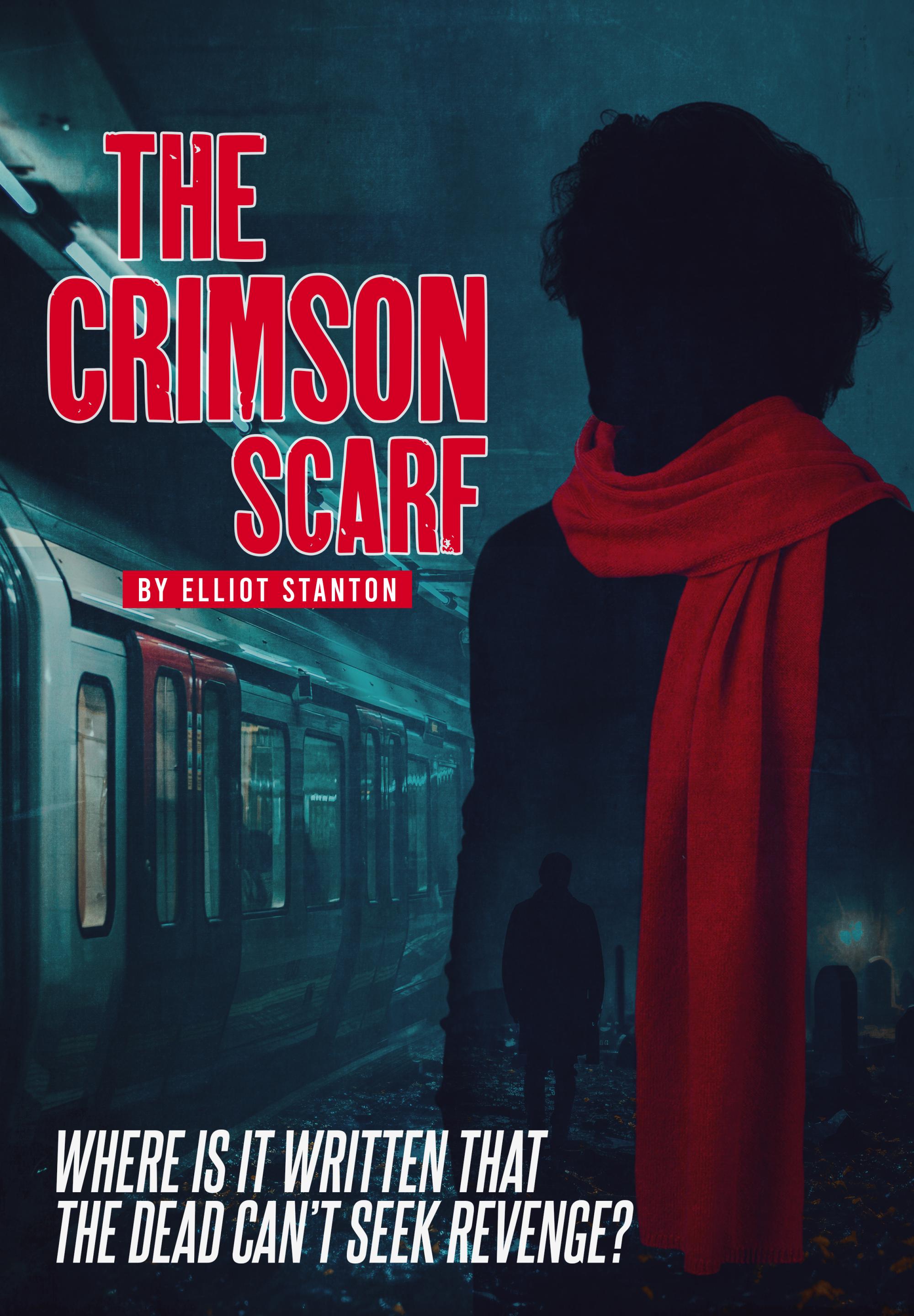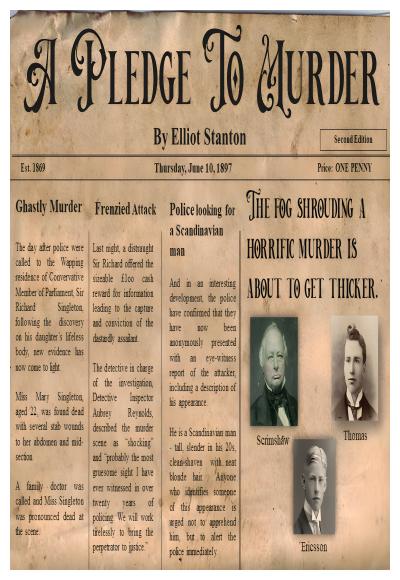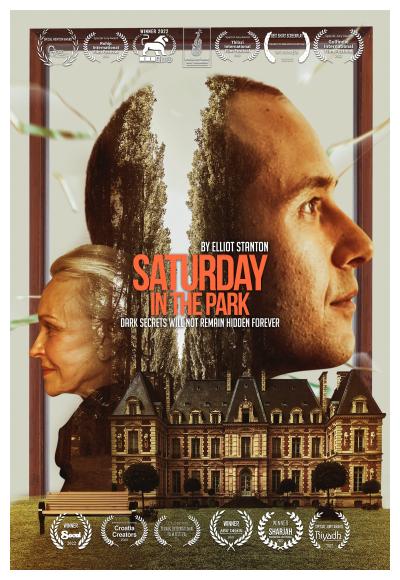
Synopsis/Details
The Crimson Scarf tells the story of Jack, an accountant who dreams of following in his late grandfather’s footsteps to become a published crime novelist, but he struggles with writer’s block. Inspiration has deserted him.
Jack travels to work wearing a crimson red scarf, a keepsake from a previous relationship he’s clearly not over. On the Tube, he meets an old man who critiques Jack’s choice of Novel - his grandfather’s- and offers some writing advice of his own; the man was a novelist who ended up working for a criminal firm, never succeeding as an author. The man also casually reveals that his evidence at a trial led to the crime boss’s conviction. However, he has just been released and will surely want revenge on the old man. Jack eventually reaches his office, where he speaks with Scarlett, the object of his affection, and realises he’s lost his scarf. That night, Jack stumbles upon a Camden crime scene and later learns that the body of the old man from the Tube was found in the canal - wearing Jack’s scarf!
Jack begins to have visions about the old man, including one visitation where the Old Man reveals that he set Jack up for his murder. Wearing the crimson scarf, he also reveals that it was Jack’s grandfather who plagiarised him, not the other way around, as everyone always believed. He was just fortunate to have his Novel released first. The Old Man was sued, leaving his burgeoning literary career in tatters. He is also aware that Jack’s grandfather had a mental illness, which is suggested could be hereditary. Jack’s fragile state of mind begins to crumble and he begins to worry for his sanity.
Panicking that the scarf may implicate him in his death, Jack spirals into a paranoid state. The criminal investigation has already revealed that the man’s name was Ernest Swakeley, and he was carrying ‘Murder at the Monastery’ by Frank Worthing (the name his grandfather wrote his book under.) Jack becomes obsessed with researching the deceased, ignoring his work and pushing away Scarlett’s attempts to reassure him.
Leaving work early one day and at his most paranoid following a string of apparitions, Jack visits his best friend, Eric, who succeeds in convincing Jack that the murder was likely due to Swakeley’s criminal past, with a news report citing this serving as the final proof needed for Jack to accept this and calm down.
With the criminal case seemingly missing his coincidental connections to Ernest Swakeley, Jack resolves to move forward with his life. He finally asks Scarlett on a date and she happily agrees. On his way home, however, he’s once more visited by the ghost of Swakeley, who taunts Jack for not realising what’s happening in his life. He asks Jack to provide details of his family and to explain how Scarlett and Eric seem to know aspects of his life that Jack had never mentioned to them. Jack cannot do this. Swakeley reveals that Jack’s life is itself a fictional creation, merely the words of another writer. No more real than the characters in his manuscript, Jack will soon meet a death fitting of someone wrapped up in a crime novel. Jack attempts to flee, but reality changes around him - the crowded tube carriage is now empty. Swakeley reappears on the platform, this time with Edwin Stafford in tow. They team up and further taunt Jack, who, overcome with fear, falls onto the rail tracks - right into the path of a train, fulfilling Swakeley’s promise of revenge.
Jack’s death is typed out as a screenplay on a laptop keyboard by a young woman who resembles Scarlett. Her name is Eleanor Stratton; she’s a writer. Eleanor takes her manuscript to meet with her AGENT, who expresses great interest in publishing it. She reiterates that hard work and determination pushed her to create a great script. However, we learn that life imitates art when it is seen that the story’s core plot was stolen by Eleanor when she overhears the real author explaining her plot in a coffee shop.
However, in the final scene, we learn that the puppet master, Eleanor herself, may be being played with.
All Accolades & Coverage
I have received coverage from Wescreenplay, with a percentage score of 98% and a rating of 'Recommend'.
Story & Logistics
Story Type:
Revenge
Story Situation:
Erroneous judgment
Story Conclusion:
Surprise Twist
Linear Structure:
Linear
Moral Affections:
Accusation, Good Man, Punishment
Cast Size:
Several
Locations:
Several
Special Effects:
Aerial image effects, Other in-camera effects, Other practical effects
Characters
Lead Role Ages:
Male Adult
Villian Type:
Authority Figure, Criminal, Supernatural
Stock Character Types:
Everyman, Fall guy, Femme fatale, Gentleman thief
Advanced
Subgenre:
Ghosts, Psychological, Supernatural, Suspense-Thriller
Action Elements:
Weaponry
Equality & Diversity:
Diverse Cast
Life Topics:
Quarterlife Crisis
Super Powers:
Superpower interaction
Time Period:
Contemporary times
Country:
United Kingdom (UK)
Time of Year:
Winter
Illness Topics:
Psychological
Relationship Topics:
Emotions and feelings, Romance





